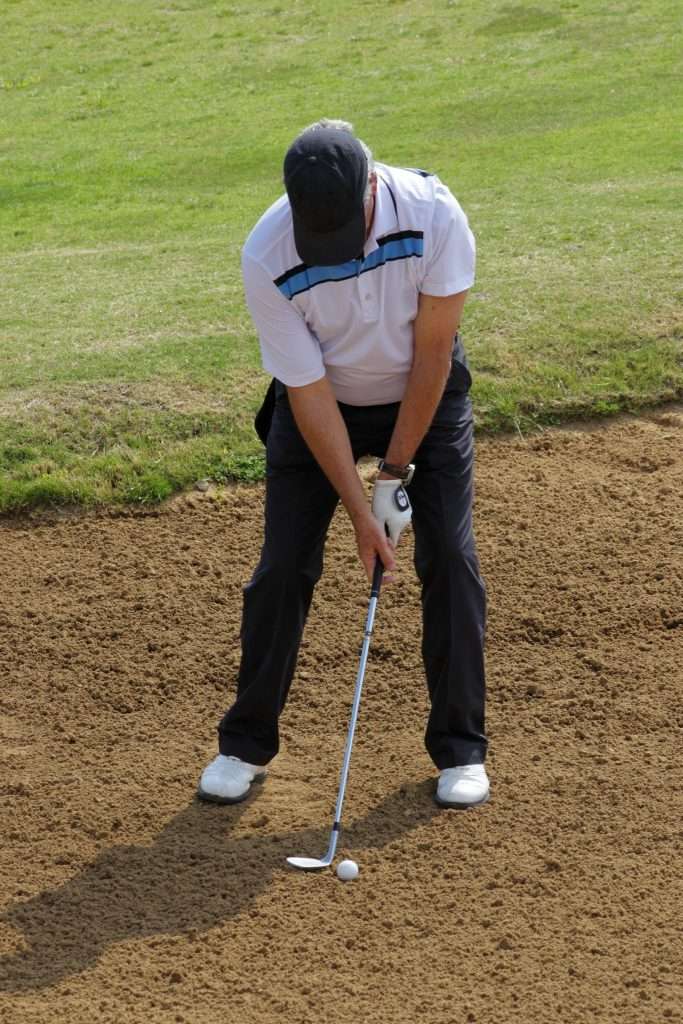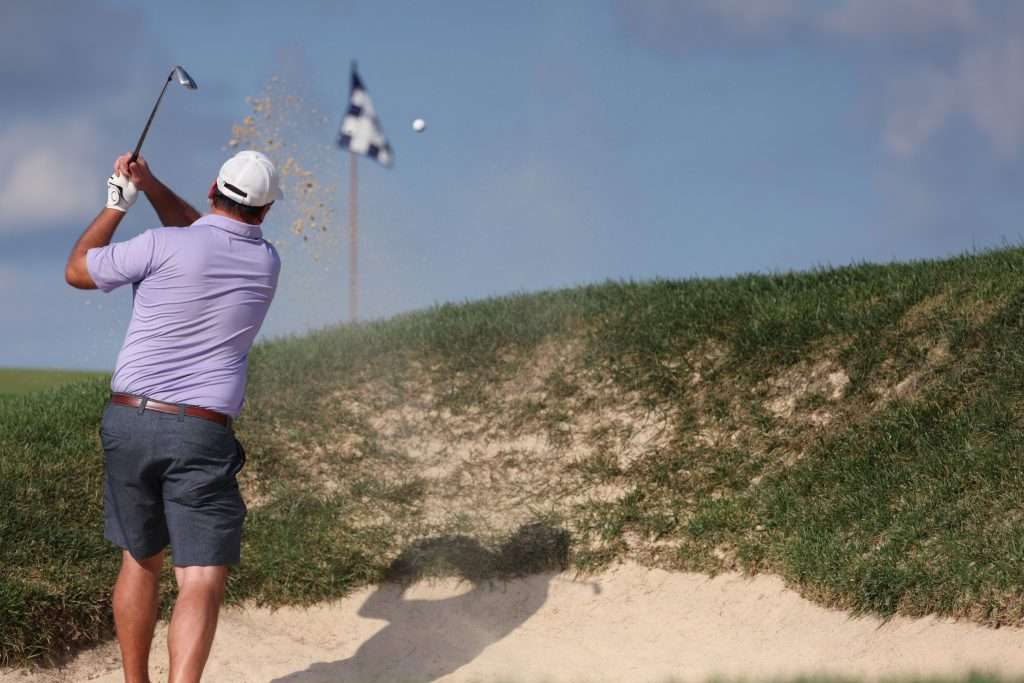Every golfer dreams of hitting all 18 fairways and greens, but it likely won’t happen without at least one trip to a sand bunker. Golf course architects design courses specifically to challenge you when your game isn’t 100% on. For most of us, this is always the case.
Whether it’s greenside or fairway, bunkers can induce anxiety and pose a higher threat to the majority of golfers. Many times, it becomes a daunting task mentally to just get out of the bunker, much less give yourself a decent look at a successful up and down.
Knowing you can’t avoid bunkers forever, it’s important to understand the proper technique for how to hit out of sand so you can conquer bunkers in your next round.
Wedge Selection for Bunker Shots
No need to overcomplicate the club selection process. For most standard bunker shots, the sand wedge (typically a 54-56 degree loft) is the right choice. Due to the higher degree of loft and bounce (if this is an unfamiliar term, learn about bounce from the experts) this wedge has, the club face will glide through the sand more easily, splashing the ball up and out of the bunker.
Without that bounce angle, the club face naturally wants to dig into the sand, causing poor ball contact and leaving the ball in the bunker more times than not. In situations requiring an even higher launch to avoid hitting into the face of the bunker, the lob wedge (typically a 58-60-degree loft) will give you the extra height needed to carry the lip.
A Setup For Success
Getting out of greenside bunkers typically calls for one of two types of shots; a high soft landing spinner or a lower runner. Both shots have a lot in common in terms of fundamental setup, but each requires different subtleties that change the trajectory, spin, and overall outcome. All sand shots must begin with a firm foundation, achieved by grounding your feet. You’ll often see the pros wiggle into the sand with their feet to provide a solid base to work upon. This not only helps with bottoming out the swing at the right ground height but also lessens the risk of losing your grip on the sand and slipping.
For higher bunker shots to land softly and stop quickly, you need a wide base. Spread the feet wider than shoulder-width apart, stabilizing the body throughout the swing and eliminating potential variables like swaying. Align the feet slightly open to the target, keeping about 75% of your weight on the front leg. Keeping the weight on the front foot helps create a consistent splash and gives the ball the spin it needs to stop quickly.

Also for this shot specifically, add more flex in your knees than usual. Ball placement for all bunker shots should be forward of center. Placement towards the front of your stance, plus opening the club face to the target are the two keys to getting a high trajectory exiting golf ball with added spin. When you open the club face, be sure to reset your grip on the club to maintain that open face throughout the swing. Hands should also be in a neutral position, avoiding any excess forward shaft lean, which would negate the open face.
For lower launching bunker shots that roll out to the hole, you will still have a wide base, favor the target side with your weight, open your feet to the target, and keep a neutral shaft at address. The two most basic adjustments to make for a low runner are to put the ball more center in the stance and open the face, but less so than with the high spinner.
Swing Mechanics for Hitting Out of Sand
Knowing how to hit out of sand also requires slight adjustments in the swing depending on which of the two shot types you find most appropriate for a given situation.
For both, a steep attack angle is non-negotiable. When the club face is too shallow through impact, the sand takes hold, often resulting in a chunked shot. Instead, hinge the wrists in the backswing with the butt of the club aiming at the ball.
For the higher sand shot, open the club face in the backswing to add additional loft. An out-to-in swing path is ideal here. Typically, this shot requires a longer and faster swing to create the spin needed to stop quicker. In the follow-through, the club face should remain open and pass the hands through impact as the hands finish high.

For a standard sand shot that rolls to the pin, you’ll need a more neutral swing path around the body. The club face doesn’t need to open much, if at all, in the backswing. Keep your body stable throughout the swing as the hands slightly hinge and release through impact. This shouldn’t require as long or fast of a swing as the high launching one because you don’t need the spin. Instead, you want to land the club face around two inches behind the ball helping to achieve the desired roll out.
Unique Situations
In most cases, these two shot styles will cover the majority of greenside bunker encounters, but sometimes you’ll find situations that call for more drastic measures. For lies where the ball is below your feet, for example, it’s tempting to want to stand up throughout the shot to “help it out”, but squatting more drastically than usual is actually what will help.
On the flip side, for scenarios where the ball is above your feet, choke up on the grip and maintain your height throughout the swing. On your unluckiest days, you might face a “fried egg,” where the ball is nearly buried in the sand. For this, shut the club face drastically to use the leading edge to dig through the sand and get the ball out easily. This shot requires a lot of practice because a shut face will look, and feel, very strange at first!
Fairway Bunkers
Fairway bunkers are much different in that they typically require a long iron or even hybrid. Even so, it’s good practice to club up one to account for any slight off-centered strikes. Still playing the ball forward in your stance and digging in with the feetl, the key to good contact from the fairway bunker is to keep the lower body quiet and steady during the swing while hands, arms, and shoulders do most of the work. Lastly, pick a grain of sand right behind the ball to focus on throughout the swing; this will help increase your chances of perfect contact.
Confidence (And Practice) is the Key
For any bunker shot, like any other style of golf shot, it’s imperative to have a positive and confident mindset. Swinging freely and accelerating through the ball is important for getting the ball up, out, and onto the green. The main objective when approaching a sand shot is to get the ball on the green but, with diligent practice, you’ll be conquering your fears, giving yourself closer looks at par, and may even start preferring the look of a bunker shot to some of the other unpredictable lies that lurk around the greens. Check out our consistent chipping article for those!


